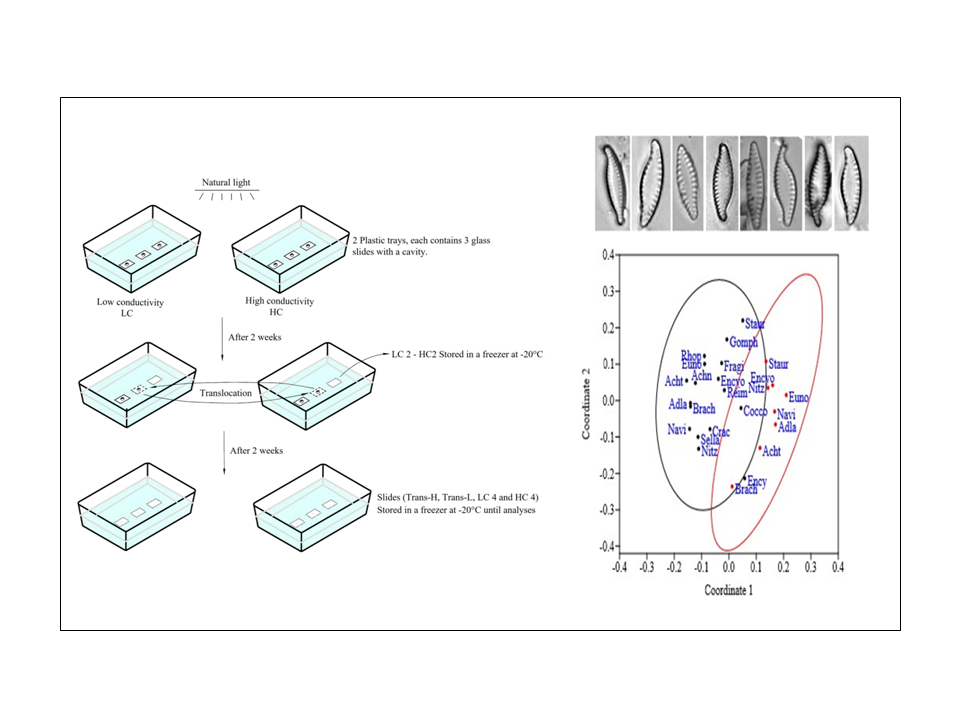
Increased water conductivity levels have been proposed as a key factor to explain the occurrence of teratological forms in freshwater diatom assemblages. The current study aimed to carry out an experiment on a laboratory scale to assess the response of periphytic diatoms to artificially increased salinity levels. The obtained results show that: a) the proportion of aberrant cells increased in high conductivity treatments, b) developed teratologies were preserved in diatom populations even after being translocated to normal conditions, and c) the degree of valve outline deformation in the dominant species was proportional to the induced water conductivity. All these data support previous field observations that linked high electrolyte content and the abundance of aberrant cells among microalgal communities in continental aquatic ecosystems.
Total file downloads: 14